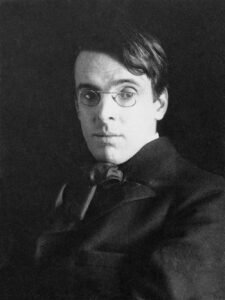Books By W.B. Yeats
- The Wanderings of Oisin and Other Poems (1889) – Poetry Collection
- The Countess Cathleen (1892) – Play
- The Celtic Twilight (1893) – Prose Collection
- Poems (1895) – Poetry Collection
- The Secret Rose (1897) – Short Story Collection
- The Wind Among the Reeds (1899) – Poetry Collection
- The Shadowy Waters (1900) – Play
- Ideas of Good and Evil (1903) – Prose Collection
- In the Seven Woods (1903) – Poetry Collection
- The Green Helmet and Other Poems (1910) – Poetry Collection
- Responsibilities and Other Poems (1914) – Poetry Collection
- The Wild Swans at Coole (1917) – Poetry Collection
- Four Plays for Dancers (1921) – Play Collection
- Michael Robartes and the Dancer (1921) – Poetry Collection
- The Cat and the Moon and Certain Poems (1924) – Poetry Collection
- The Tower (1928) – Poetry Collection
- The Winding Stair and Other Poems (1933) – Poetry Collection
- A Vision (1937) – Nonfiction
- New Poems (1938) – Poetry Collection
- Last Poems and Two Plays (1939) – Poetry and Play Collection
- On the Boiler (1939) – Poetry Collection
- Purgatory (1939) – Play
- The Herne’s Egg: A Fairy Tale in Prose (1939) – Short Story
- The Death of Cuchulain (1940) – Play
- The Resurrection (1940) – Play
- The Words upon the Window Pane (1940) – Play
About W.B. Yeats
 William Butler Yeats, commonly known as W.B. Yeats, was an Irish poet, dramatist, and literary figure who played a crucial role in the Irish Literary Revival and the emergence of modern Irish literature. Born on June 13, 1865, in Sandymount, County Dublin, Ireland, Yeats was raised in a family with a strong interest in art and literature. His father, John Butler Yeats, was a renowned portrait painter, and his siblings were also involved in various artistic endeavors.
William Butler Yeats, commonly known as W.B. Yeats, was an Irish poet, dramatist, and literary figure who played a crucial role in the Irish Literary Revival and the emergence of modern Irish literature. Born on June 13, 1865, in Sandymount, County Dublin, Ireland, Yeats was raised in a family with a strong interest in art and literature. His father, John Butler Yeats, was a renowned portrait painter, and his siblings were also involved in various artistic endeavors.
Yeats’ literary career spanned several decades, during which he produced an extensive body of work that encompassed poetry, plays, essays, and prose. He was deeply influenced by Irish mythology, folklore, and mysticism, which are recurrent themes in his writing. His early poetry reflects his fascination with Celtic legends and the supernatural, while his later work delves into themes of love, aging, and mortality.
One of Yeats’ most notable achievements was his involvement in the founding of the Abbey Theatre in Dublin, along with Lady Gregory and John Millington Synge. The Abbey Theatre became a pivotal institution in the Irish cultural revival, showcasing the works of Irish playwrights and contributing to the development of a distinctively Irish theatrical tradition.
Yeats’ poetry is characterized by its lyrical beauty, rich symbolism, and deep philosophical insights. He received the Nobel Prize in Literature in 1923 for his “inspired poetry, which in a highly artistic form gives expression to the spirit of a whole nation.” Some of his most famous works include “The Lake Isle of Innisfree,” “The Second Coming,” and “Sailing to Byzantium.”
Throughout his life, Yeats remained actively involved in Irish politics and cultural affairs, advocating for Irish nationalism and independence. His commitment to preserving and celebrating Irish culture earned him a lasting legacy as one of the greatest poets of the 20th century and a towering figure in Irish literature and cultural history.
Yeats passed away on January 28, 1939, in Menton, France, but his profound influence on literature and culture continues to be felt to this day. His poetry continues to be celebrated for its timeless beauty, profound insights, and enduring relevance.

